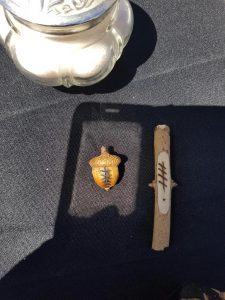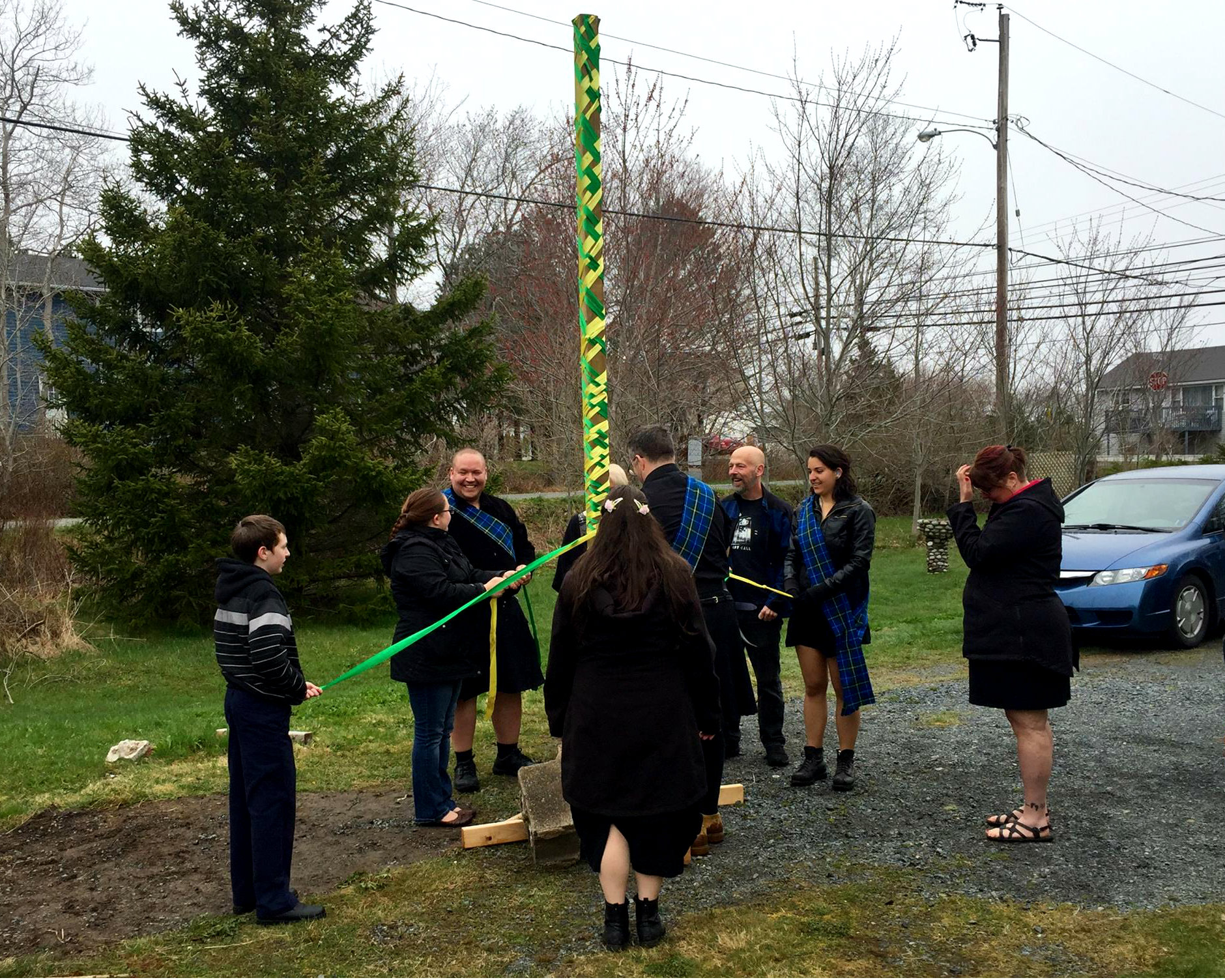Beltane is just around the corner and I know you are all looking for family-friendly activities to celebrate. Beltane is a time to celebrate fertility and, while you may not want to beat your children over the head with this (so to speak), you do want them to understand it brings life and all the things they love about spring and summer.
Here are some fun group and family-friendly activities you can do to celebrate.

Crafts:
Make a floral crown or cone. Teach the children to be respectful of what they harvest and to do so mindfully. (Adults, you need to remember this too!) For your pretty flower crown or bouquet, something is dying. If you are not a fan of this, try potting a plant to bring inside, and decorate the pot.
Ribbon is also highly associated with Beltane because of the May Pole (which you can always dance by the way), so why not try braiding some ribbon crowns or hanging ribbons from trees to decorate your celebration.

Have a Bonfire:
The Bale Fire is a long-standing tradition used for protection and purification. It is also a fantastic gathering point for stories and celebrations. So why not grab the marshmallows and have yourself a little roast.
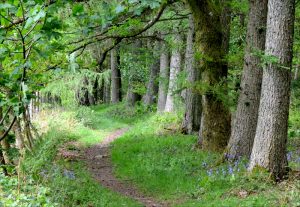
Go A-Maying:
Take a walk though the woods and enjoy some of the new life that is budding up around you. You can take pictures, clip trimmings, or draw what you see and maybe even enjoy a picnic in nature. It’s always good to get some fresh air and commune with nature.

Gardening:
This is a great way to introduce your children to the idea of fertility without having to explain the “birds and bees”, if you aren’t quite ready. The seeds breed life and life is all around us. Children can help by tilling and watering the soil. They will gain a sense of satisfaction and acquire new skills through helping with the planting.
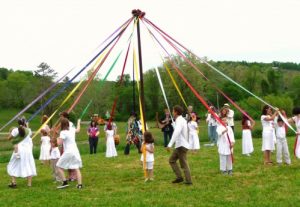
Dance that May Pole:
Beltane is all about fertility and fun. What better way to wholesomely celebrate than dancing around a giant phallic object and decorating it? Try to weave your ribbons over-under-over-under to create a beautiful pattern down your may pole. You can also tie wishes for the next year to the pole before wrapping it. Focus on those hopes as you dance, and watch the magic come to life.
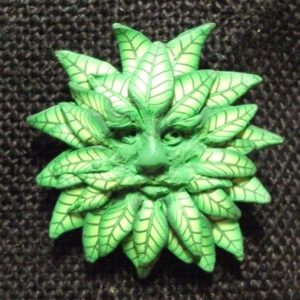
Bake a Green Man Cake:
We all love the Green Man and we all love cake! Lets combine the two and enjoy! (Keep scrolling for a recipe!)
I hope this has helped you in deciding what to do with your May Day celebrations. Enjoy!
INGREDIENTS
- 2 1/2 C all-purpose flour
- 1/4 C cornstarch
- 4 tsp baking powder
- 1/2 tsp salt
- 2 tsp cinnamon
- 1 tsp ground nutmeg
- 1 tsp ground cloves
- 1 C milk
- 3 eggs
- 2 tsp pure vanilla extract
- 1/2 tsp rum-flavored extract
- 1 C butter, softened (don’t use margarine)
- 2 C firmly packed brown sugar
- 2 packages cream cheese, softened
- 1/2 C butter, softened
- 2 C confectioner’s sugar
- 1 tsp vanilla extract
- 1 package white fondant
- Green food coloring
- Leaf-shaped cutters
DIRECTIONS
Preheat oven to 350, and lightly grease and flour your cake pan. Mix all dry ingredients together in a large bowl and blend well. In another bowl, combine milk, eggs, vanilla and rum extracts together.
Add the softened butter to the flour mixture, and beat until it forms a clumpy sort of dough. Gradually add the liquid mixture in, blending it a little at a time until all the milk mixture has been combined with the flour mixture.
Beat until completely smooth, and then add the brown sugar. Mix for another thirty seconds or so. Scoop batter into the pan and spread evenly.
Bake for 45 minutes, or until a toothpick inserted in the center comes out clean. Allow to cool completely before removing from pan. Once you have it out of the pan, you can begin frosting the cake.
To make the cream cheese frosting, combine the cream cheese and the butter in a bowl, mixing well. Add the vanilla extract. Finally, stir in the confectioner’s sugar and blend it in. Spread this evenly over the cake, and allow it to sit for an hour or so to firm up.
To make the Green Man himself, you’ll need green fondant. If you’ve never worked with fondant before, it can be a little tricky, but with some practice you’ll be able to use it easily. Roll out the fondant and knead it into a ball. Add the green food coloring in very small amounts and blend it in, until you’ve got the shade of green you want.
Roll the fondant out until it’s about 1/8” thick. Use the leaf-shaped cookie cutters to cut out different sized leaves. Score lines on them, to look live leafy veins. Place them on top of the frosted cake and press in place, layering them to form a Green Man. Roll two small pieces into balls, flatten them down, and put them in to create eyeballs in amongst the leaves. Reminder – fondant tends to dry quickly once it’s rolled out, so only cut off small pieces. The cake in the photo was made using a block of fondant about the size of a package of cream cheese.


